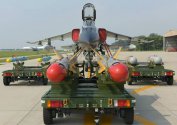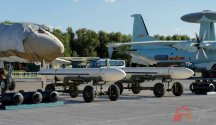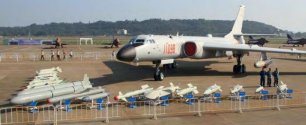I know, and I was careful to only address the method, not the person. Please don’t take it personally.
In my experience, good critical analysis needs constant challenges and re-evaluation from all angles to help root out errors to improve. The worst thing an analysis can do is become too attached to one’s own hypothesis and conclusions, because then it stops being about the subject matter and becomes a defending one’s reputation and honour.
I do agree with this, I suppose the issue is that I think my methodology for assessing air to ground munitions is the result of many years of consistent rework and re-evaluation and testing of hypotheses.
Demanding observational evidence is all scientific and good, when observing nature. When observing a military with good opsec, you only see what they want you to see.
A good test case study would be all the Russian PGMs we know for a fact China purchased in great quantities alongside their MKKs.
At what yest ould they have reached widespread operational deployment per your benchmarks?
We received quite a number of images of those Su-30MKKs with PGMs in the mid 2000s from the PLA, at that time.
I.e. we saw in service Su-30MKKs equipped with Russian PGMs.
That said, this a good point to raise, and I want to clarify that there are a few cases where we can get evidence which supersedes the "three stage" model of munitions verification I described above.
The requirement for those evidence stages can be waived partially or wholly, if we get:
- credible industry news/information of the PLA making a purchase of given weapons. Usually this only means Russian manufacturers, because the Chinese aerospace industry do not give us anything resembling good quality information as to PLA purchases of new weapons.
- official PLA static displays (i.e. not defense expo/Zhuhai static displays) of in service aircraft displayed with a new munition type, even if it had not been imaged previously going through all three stages of evidence. When I talk about official PLA static displays, I mean things like this, which are proper PLAAF displays:


And not things like this, which are defense expo displays where a wide number of munitions are showcased with an aircraft, which serve as an advertisement for those munitions but many of which are not in service with the PLA:


Firstly, I never said the PLA doesn’t show air to ground weapons. I specifically said they do so very rarely.
The point I am trying to highlight is that all those photos of PGMs are clearly released by the PLA themselves. Thus they decide what we see. So is it more likely that they would throw opsec out the window and release nice closeups of their newest toys as soon as certain milestones have been passed, and have not bothered to invest in any new air to ground weapons since the 2000s; or that they would only release photos every once in a while of weapons from a pre-approved list that isn’t expanded all that regularly for opsec purposes?
I understand where you are coming from, however for the purpose of us as observers, and for the purposes of assessing warfighting ready capabilities, can we credibly claim that XYZ PGM type is "likely in service" without even a shred of evidence?
And let's not oversell it -- I never said that we needed prompt and closeup images of new weapons to meet those thresholds.
But I do think that expecting some sort of imagery (blurry/wall climber or official), of a regular in service PLA fighter carrying or associated with a munition type, is a very reasonable expectation for us to call it with confidence in saying "this weapon can be considered a legitimate capability and operational at this point in time".
And this is very much core opsec relevant because knowing what kind of precision strike capabilities is going to potentially fundamentally change the procurement and deployment strategies of certain highly interested militaries.
While there is a case for releasing info on Air to air and anti ship weapons deployments to serve as deterrence against foreign intervention. The same goes not apply to air to ground. That’s why we get much more information on AAMs, SAMs and antishipping weapons while precision strike is very much a big empty void.
We know the PLAAF has a wide array of off-the-shelf options readily available, but we don’t know which systems they have invested significantly in. That makes it hard for opponents to tailor countermeasures and that’s the whole point.
I would posit a simpler explanation, which is that the lack of any official or non-official pictures of in service PLA aircraft with PGMs, lack of credible industry news of such purchases, and lack of any sort of official displays of such PGMs, is simply a reflection that the PLA has not committed to them yet, outside of what the aforementioned types above.
We apply those same common standards for all other aerial weapons in PLA service:
- A2A missiles
- standoff A2G missiles/ALCMs
- anti ship missiles
- imported munitions of all kinds
... So I don't see why we would apply different standards to assessing PGMs for the PLA either. There is no reason why the OPSEC for PLA PGMs would be so much more different than those above weapons types, and let's recall that the PLA does give us images of the PGMs they have in service (the 500kg LGB) on a semi regular basis despite whatever deterrence or lack of deterrence effect it has relative to other aforementioned weapons types.
If anything, having this discussion in this thread is poetic, because of the many lessons the Russian-Ukraine war has shown us, one is that it is much safer to err on the side of caution to ensure that certain supposed systems are actually in service and combat capable in a credible manner.
I think for us, having an expectation for even just one or two images of an in service PLA fighter equipped with or displayed with a PGM type, as a minimum standard of evidence for us to make to the call to say "XYZ PGM type is in PLA service" is a very reasonable, and
necessary expectation.







